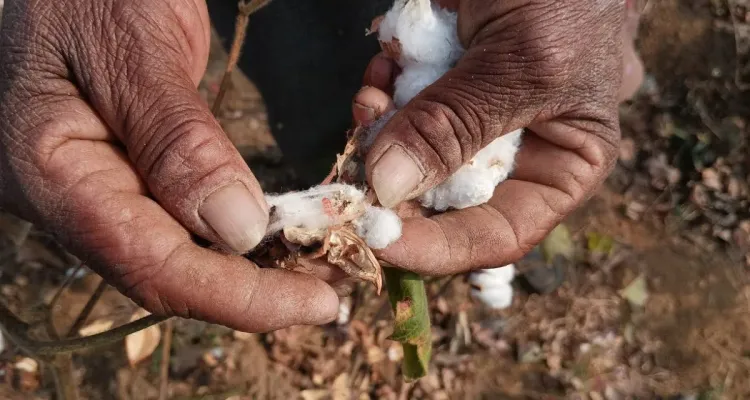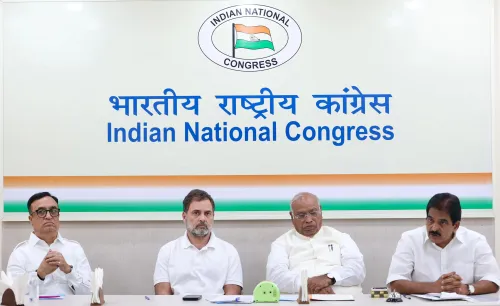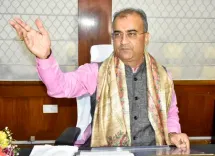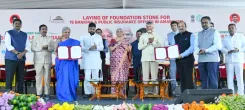How is Gujarat Protecting Cotton Crops from Pest Infestations?

Synopsis
Key Takeaways
- Implement integrated pest management to safeguard crops.
- Utilize pheromone traps to monitor pest activity.
- Incorporate natural solutions like neem oil and biological agents.
- Be cautious with chemical pesticide use to prevent resistance.
- Support from government initiatives is available for farmers.
Ahmedabad, Aug 18 (NationPress) As cotton fields in Gujarat reach a pivotal growth phase, the State Agriculture Directorate has issued a warning regarding the escalating infestations of pink bollworm, spotted bollworm, and green caterpillars. In a formal advisory published this week, the department has urged farmers to implement integrated pest management (IPM) strategies to safeguard their crops and secure robust yields.
Officials recommend the collective deployment of pheromone traps — two per acre — to monitor pest activity from sowing through to harvest. Farmers are advised to replace lures at regular intervals and keep a daily log of pest counts.
The advisory also suggests using neem oil sprays, neem-based pesticides, and biological solutions like Trichogramma wasps and Chrysopa eggs to manage pest populations. For controlling pink bollworm, specific guidelines include the usage of gossyplure RTU tubes at designated intervals during crop development.
Moreover, farmers engaged in natural farming are encouraged to utilize botanical insecticides and adopt mechanical strategies like hand-picking larvae and removing damaged buds. Establishing bird perches is also recommended to attract insectivorous birds that help control pest populations naturally.
The Agriculture Directorate has cautioned against the indiscriminate application of chemical pesticides, stressing that sprays should only be conducted when economic damage thresholds are exceeded, and with appropriate intervals between biological treatments and chemical applications.
In regions experiencing severe endemic pest pressure, farmers have been directed to use only university-recommended pesticides in specified dosages.
“By embracing integrated methodologies, farmers can not only shield their crops but also diminish their dependence on chemical pesticides, leading to enhanced productivity and improved incomes,” the advisory emphasized.
Cotton is one of Gujarat’s principal cash crops, and experts warn that unchecked pest attacks could significantly impact yields and farmer income this season.
Gujarat is home to approximately 62 lakh farmers, with nearly 80 percent being small and marginal cultivators managing less than two hectares of land.
Agriculture is a cornerstone of the state’s economy, involving over 50 percent of its rural populace, though it contributes about 15 percent to the Gross State Domestic Product (GSDP). Major crops include cotton, groundnut, bajra, wheat, rice, and pulses, while the state also excels in horticulture and dairy farming through the Amul cooperative model.
The government offers support to farmers through initiatives such as the Mukhyamantri Kisan Sahay Yojana for crop loss compensation, Soil Health Card schemes, subsidies for drip irrigation and solar pumps, and training programs under Krishi Vigyan Kendras to encourage modern agricultural practices.








